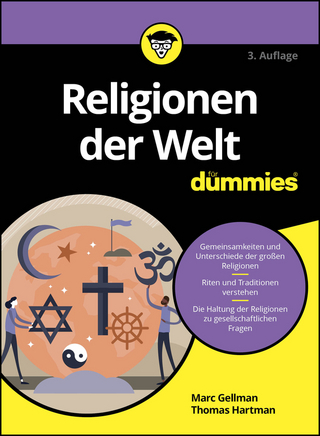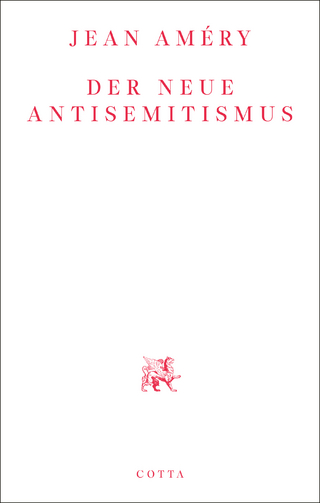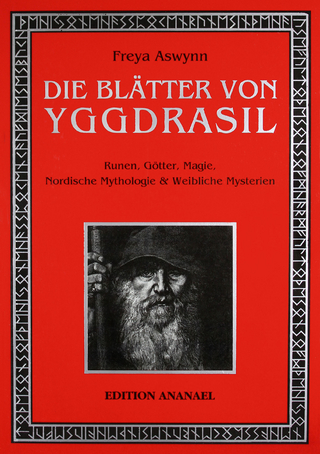
Our Non-Christian Nation
Stanford University Press (Verlag)
978-1-5036-1499-4 (ISBN)
Less and less Christian demographically, America is now home to an ever-larger number of people who say they identify with no religion at all. These non-Christians have increasingly been demanding their full participation in public life, bringing their arguments all the way to the Supreme Court. The law is on their side, but that doesn't mean that their attempts are not met with suspicion or outright hostility. In Our Non-Christian Nation, Jay Wexler travels the country to engage the non-Christians who have called on us to maintain our ideals of inclusivity and diversity. With his characteristic sympathy and humor, he introduces us to the Summum and their Seven Aphorisms, a Wiccan priestess who would deck her City Hall with a pagan holiday wreath, and other determined champions of free religious expression. As Wexler reminds us, anyone who cares about pluralism, equality, and fairness should support a public square filled with a variety of religious and nonreligious voices. The stakes are nothing short of long-term social peace.
A Professor at Boston University School of Law, Jay Wexler is also a humorist, short story writer, and novelist. A one-time clerk to Justice Ruth Bader Ginsburg and former lawyer at the US Department of Justice, he has written for National Geographic, The Boston Globe, McSweeney's Internet Tendency, Salon, and many other outlets. His books include When God Isn't Green (2016) and Holy Hullabaloos.
Contents and AbstractsIntroduction chapter abstractThis chapter presents the main themes, issues, and arguments of the book. After an opening vignette describing the efforts of the Satanic Temple to erect a veterans monument in a small Minnesota town, the chapter introduces the First Amendment, particularly the Establishment Clause and the concept of separation of church and state as set out by the Supreme Court. It traces demographic changes in the country's religious makeup that have rendered the nation far less Christian and more secular than at previous times in its history. After a discussion of the issue of defining religion, the chapter sets forth the book's primary argument—namely, that a religiously diverse public square is preferable to one dominated by Christianity.
One: Mummies, Monuments, and Monotheism: Religious Displays as Government Speech chapter abstractThis chapter discusses the constitutional doctrine of government speech under the First Amendment as it relates to the erection of religious monuments on public property. It does so, first, by describing and evaluating cases concerning the constitutionality of various Ten Commandments monuments under the Establishment Clause, and particularly the case of Van Orden v. Perry, which upheld such a monument on the grounds of the Texas Capitol. The chapter goes on to discuss the ultimately unsuccessful efforts of the small religious group known as the Summum, located in Salt Lake City, to have a Utah town erect a monument to its "Seven Aphorisms" in a park next to the community's Ten Commandments monument. The author's trip to visit the Summum and understand its mummification practices is described.
Two: Pagans, Pentacles, and Pluralism: Religious Displays in the Public Forum chapter abstractThis chapter contrasts the government speech doctrine discussed in chapter 1 with the more minority-friendly First Amendment free speech doctrine known as the designated public forum. Under this doctrine, if the government designates a part of its property for private speech, including religious speech, it may not exclude speech on the basis of the viewpoint that is expressed by that speech. After explaining the doctrine, the chapter describes the successful efforts of Pagans and Wiccans, under the leadership of Wiccan priestess Selena Fox and through litigation brought by Americans United for Separation of Church and State, to get the Department of Veterans Affairs to allow Pagans buried in national cemeteries to have pentacles displayed on their headstones. The chapter also describes the author's visit to Fox's Circle Sanctuary in Wisconsin to participate in a Veterans Day event.
Three: Secularism, Statehouses, and School Boards: Prayers and Invocations before Government Bodies chapter abstractThis chapter investigates the historical practice of prayer-giving before legislatures and other government bodies, as well as the Supreme Court's treatment of the practice in, most recently, the case of Town of Greece v. Galloway. Under the Establishment Clause of the First Amendment, the Court has held that legislative prayer and other religious invocations before government bodies are constitutional so long as the government has a policy of antidiscrimination—i.e., it will not discriminate on the basis of religion when inviting or allowing people to pray before meetings. The chapter investigates specifically the invocation given before the monthly town meeting of the Town of Greece (New York) by an Atheist who had previously sued the town unsuccessfully. The author's trip to witness this invocation is described.
Four: The Satanic Temple: Taking It to a Whole 'Nother Level chapter abstractThis chapter takes an in-depth look at the key player in the phenomenon described in the book, namely the Satanic Temple. The chapter provides a brief history of Satanism, including a discussion of the Romantic Satanists, a literary movement in the eighteenth century that was the first to recover the symbol of Satan as a positive figure. The chapter also discusses the rise of the Church of Satan in the Bay Area in the 1960s, as well as the so-called Satanic Panic of the 1980s, in which people were wrongly accused of crimes committed in the name of Satan. The chapter then relates the history and doctrine of the Satanic Temple and describes its efforts to give legislative invocations and place monuments on public property (including its nine-foot-tall bronze monument to Baphomet).
Five: Muslims, Money, and Middle Schools: Government Funding of Religion chapter abstractThis chapter investigates the issue of government funding of religion. After a brief foray into the Establishment Clause in this area, including a discussion of the important voucher school case Zelman v. Simmons-Harris, the chapter describes how some minority religious groups such as the Unification Church and the Church of Scientology have received public funding for their programs. The chapter also relates how Christian legislators in several states have objected to the inclusion of Islamic schools in their proposed voucher programs and then investigates these Islamic schools through the author's trip to the Al-Iman School in North Carolina.
Six: Atheists, the Antichrist, and After-School Clubs: Religious Activities in the Public Schools chapter abstractThis chapter concerns the activities of religious groups in the public schools, one of the most controversial issues in church-state law, given the importance of these schools to the formation of future citizens. At the outset, the chapter explains the First Amendment law governing this area, including cases about teaching alternatives to evolution in the biology curriculum. Next, the chapter examines a series of cases in which the Supreme Court has held that if public schools open their facilities to after-school clubs, they may not exclude religious clubs, such as Good News Clubs, from using those facilities. After laying out the law, the chapter then examines efforts by Atheists, the Satanic Temple, and others to distribute religious literature and to start their own after-school clubs in the public schools.
Conclusion: Conclusion chapter abstractThe concluding chapter begins with a brief recap of the four key descriptive points that the book has advanced and then proceeds to argue that the movement to increase minority participation in American public life is one that should be celebrated and continued. Specifically, the chapter argues that a religiously cacophonous public square is preferable to an entirely Christian one because it is more consistent with American ideals of free expression and diversity of ideas as enshrined in the First Amendment, because it may promote a more educated citizenry with regard to religion, and because this improved education may result in greater social peace. The chapter also considers potential counter-arguments and pitfalls of encouraging an increased role for religion in the public square, including the possibility that anti-liberal or parody organizations will seek to participate in public life.
| Erscheinungsdatum | 17.09.2020 |
|---|---|
| Verlagsort | Palo Alto |
| Sprache | englisch |
| Maße | 152 x 229 mm |
| Themenwelt | Geisteswissenschaften ► Religion / Theologie |
| Recht / Steuern ► EU / Internationales Recht | |
| Recht / Steuern ► Öffentliches Recht | |
| ISBN-10 | 1-5036-1499-9 / 1503614999 |
| ISBN-13 | 978-1-5036-1499-4 / 9781503614994 |
| Zustand | Neuware |
| Haben Sie eine Frage zum Produkt? |
aus dem Bereich


